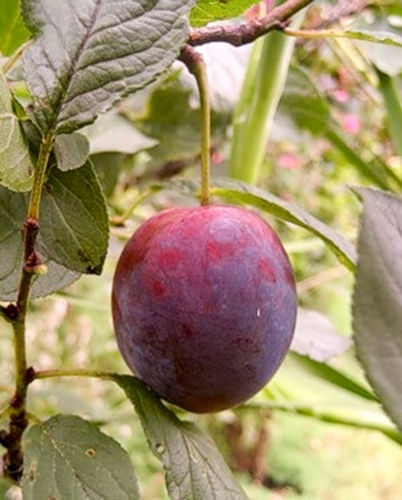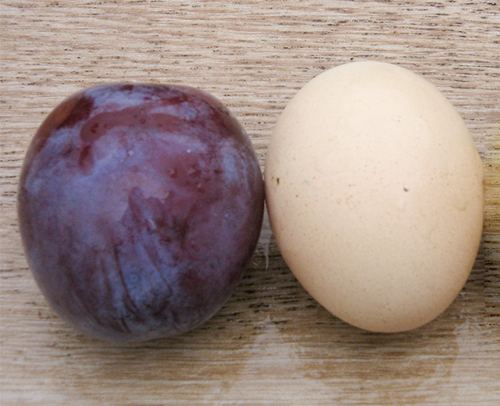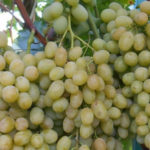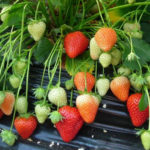Plum variety Etude
Etude - variety of Plum house (Prunus domestica) of medium early ripening. Bred at the All-Russian Research Institute of Genetics and Selection of Fruit Plants. I.V. Michurina through the crossing of a complex interspecific hybrid Eurasia 21 with the homemade plum variety Volzhskaya krasavitsa. The authorship belongs to G.A.Kursakov.

In 1983, the variety was sent to the State test. In 1985 it was zoned for the Central Black Earth Region (Tambov Region). Widely distributed in the Voronezh, Leningrad, Moscow, Yaroslavl regions. Outside of Russia, Etude plum grows in Belarus, Kazakhstan, Moldova, Ukraine, Estonia.
The trees are quite tall (above average growth), with a raised oval-spherical crown. The bark on the trunk and skeletal branches is slightly rough, dark brown colored, covered with a gray bloom. Shoots are thick, straight, brownish-brown in color. Buds are of medium size, not pressed against the shoot, cone-shaped, with a pointed tip, dark brown. Lentils are small, yellow, few in number on the stem and numerous on the shoot. The internodes are of medium length. Leaves are larger than medium in size, rounded-ovoid, with an oval base and a slightly pointed tip, sharply turning into a spout; the edge of the leaf is framed by a double-gable serration. The leaf blade is dark green, slightly wrinkled, wavy in shape and slightly concave along the central vein. Petioles are medium in length and thickness, pigmented. The glands are rather large in size, round in shape, on each leaf petiole there are 1 - 2 pieces. The stigma of the pistil is located above the anthers.
The flowers are large. Petals are oval in shape, not in contact with each other.

Fruits are of medium and above average size (weighing 28 - 30 g), aligned, oval-ovoid. Abdominal suture of medium depth. The color of the fruit is reddish-purple. The skin is firm, of medium thickness, covered with a thick waxy coating. Subcutaneous dots are gray, numerous, clearly visible. The bones are loose, medium-sized, oval in shape. The separability from the pulp is excellent.
The pulp is greenish-yellow in color, dense structure, juicy, tender, taste - good, pleasant, sour-sweet. Tasting score - 4.3 points out of 5. In terms of biochemical composition, plums contain: dry matter (15.4%), the amount of sugars (7.16%, in some years 11.84%), acids (1.96%), P-active catechins (142%), ascorbic acid (15 mg / 100 g).
Flowering takes place in the mid-early period (May 20 - 31). Fruit ripening - simultaneous, in the middle (at the beginning of the 3rd decade of August). The early maturity is good: the trees bear fruit from the 4th year. Fruiting is stable, annual. The yield is high (up to 20 kg / tree). The fruits tolerate long-distance transportation well. In cool storage conditions, the shelf life of plums reaches 60 days.

The level of winter hardiness of wood and flower buds is high. The general level of winter hardiness of the Etude variety is assessed as relatively high. It is resistant to diseases and pests as well as prolonged droughts.
This plum is partially self-fertile. Among its best pollinators, the following varieties are distinguished: Volzhskaya krasavitsa, Zarechnaya early and Renklod Tambovsky.
Table-technical grade. Great for small garden areas. Recognized by both amateur and professional gardeners.
The main advantages of Etude plum include: attractive fruits of good taste, an increased level of winter hardiness of wood and flower buds, high annual yields, and early maturity.








